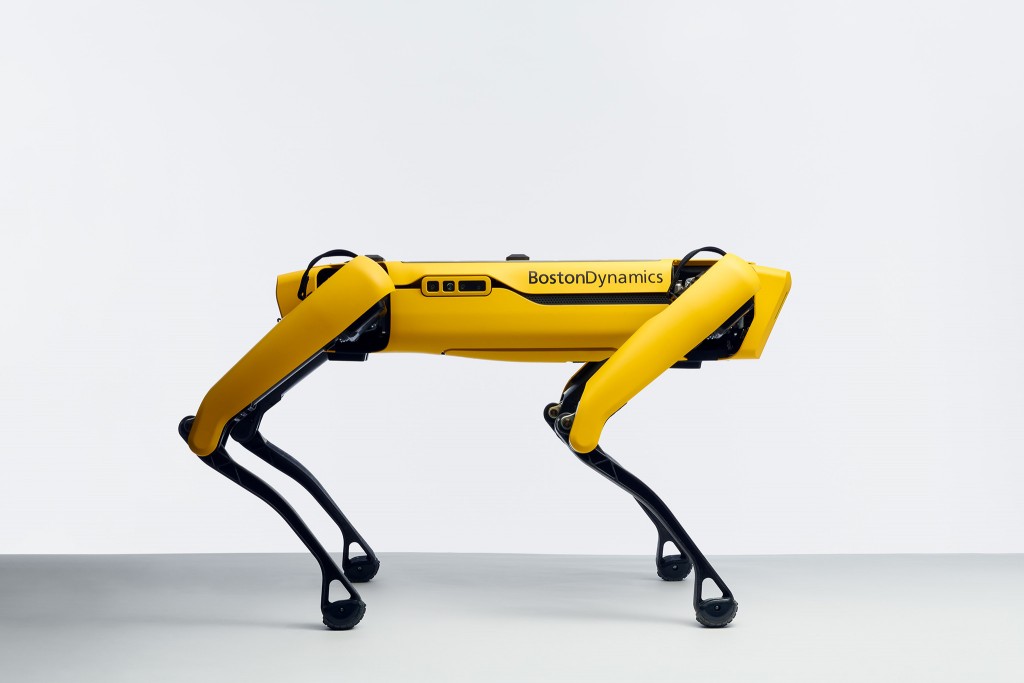Boston Dynamics' Atlas robot has picked up some new skills and the ability to perform small tasks on the construction job site. While delivering a bag of tools may be a small task, it signals the growth of complexity the Atlas robot is capable of.
A previous video of Boston Dynamics' Atlas robot shows the machine dancing to "Do You Love Me" by The Contours. The previous video showcases Atlas' locomotive abilities: dancing, walking, grooving, and more. But these skills mainly utilize the lower body. With Boston Dynamic's latest video "Atlast Gets a Grip," Atlas shows off more complex upper body movements.
Atlas' new skills revolve around interacting with objects in order to complete course modifications. The recent Boston Dynamics video tasks Atlas with delivering a bag of tools to a worker standing on the top of a multi-story scaffold.
This task was more complex than travelling around a parkour course. The robot needed to use a wood plank to create a small bridge that granted Atlas access to the scaffolding. Delivering the bag of tools involved the robot, rather showily, tossing the bag of tools to the highest level of scaffolding. To get off the scaffold, Atlast pushed a wooden block off the structure and used it to dismount with a 540-degree flip that projects engineers have called the "Sick Trick."
The routine differs from previous routines Atlas has completed. This routine was a little less flashy and showed more functionality. Ben Stephens, the Atlas controls lead, says that the new functional moves are a natural progression of ongoing research.
"We're layering on new capabilities," Stephens says. "Parkour and dancing were interesting examples of pretty extreme locomotion, and now we're trying to build upon that research to also do meaningful manipulation. It's important to us that the robot can perform these tasks with a certain amount of human speed. People are very good at these tasks, so that has required some pretty big upgrades to the control software."
Atlas' perception capabilities were challenged. The robot didn't need to just detect the bag of tools, it needed to interact with it by gripping and tossing it. Just interacting with these objects wasn't the only challenge as well. Atlas needed to stay balanced while carrying these objects and moving around the course.
"Now, manipulation is forcing us to take that information and interpret it in terms of how we can get the hands to do something specific," says Robin Deits. "What's important about the Atlas project is that we don't let go of any of those other things we've learned."
Pushing a wooden box off a platform might not seem like a complex task at first, but a lot is going on under the surface. Pushing the box means that Atlas needs to utilize its weight to generate enough force to move the box off the platform, all while remaining balanced and not falling off the platform.
Spot and Stretch are some of the robots commercially available. Atlas is currently a research platform that focuses on discovering what is possible in the current, ever-evolving state of robotics. The advancements found in Atlas can be used to advance the other robots in Boston Dynamics' lineup.
"This is more a demonstration of some of the robot's new control capabilities, and a fun connection to our prior work," says Scott Kuindersma, Atlas team lead at Boston Dynamics. "Our hope is that, if we can build the foundational technology that allows us to easily create and adapt dynamic behaviours like these, we should be able to leverage it down the road to perform real, physically-demanding jobs with hustle."
While a humanoid robot being utilized on active job sites is still far in the future, the recent object manipulation skills Atlas showed off steps in that direction.



